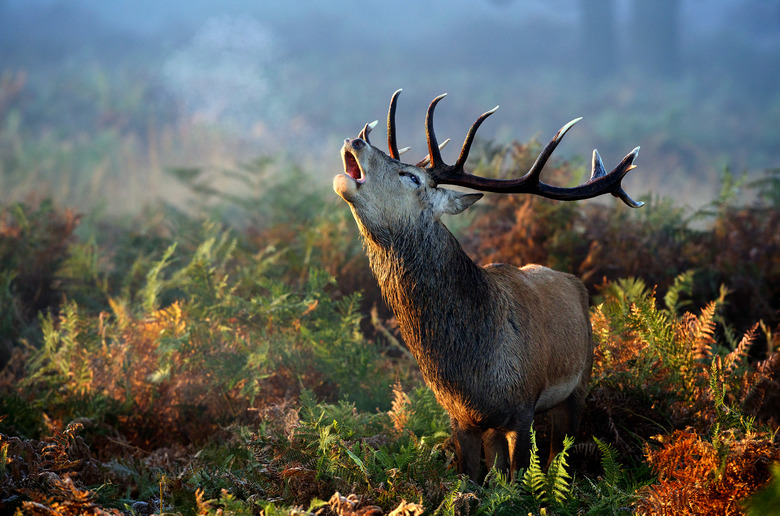How Do Animals Communicate?
Animals communicate using a variety of techniques that that can be classified into four main categories: visual, auditory, chemical and tactile. Visual communication includes factors such as color, movement and display structures like raised hair or ornamental feathers. Auditory communication uses vocal sounds and other methods of generating noise such as knocking and clicking. Chemical communication involves the detection of chemicals through the senses of taste and smell. Tactile communication requires contact between individuals and can range from grooming to bites, scratches and physical collisions.
The types of communication used by different species of animals are influenced by their physiology and the nature of the environment, with most animals using various communication methods throughout their lifetime. Animal communication serves a range of purposes including finding a mate, attracting prey, declaring territory and warning off potential predators.
Auditory Communication Techniques
Auditory Communication Techniques
Just as in humans, sound-based signals are one of the most common methods used for animal communication. Sounds can be used to convey a range of meanings and intention, and this can result in complex and specific sound patterns.
For example, the warning calls of monkeys can communicate not only what type of predator is in the vicinity, but also where the predator is located and how close it is. Many birds use their songs for multiple purposes, such as declaring their territory, attracting mates and warning off predators.
A significant advantage of sound communication is the ability to be transmitted large distances. The song of the humpback whale, for example, can be transmitted up to 10,000 miles through the ocean.
Chemical Communication Techniques
Chemical Communication Techniques
Many animals can communicate through the generation of fragrant chemicals called pheromones, which are detected through the senses of taste and smell. Scents have the advantage of remaining for a relatively long time compared to other methods of communication.
Many animals, including wolves and big cats, use scent to mark their territory. This can be in the form of urine, or secretions from musk glands found in the face, throat or other parts of an animal's anatomy. These scent markers can remain long after the animal has travelled to other areas.
Other species use pheromones, which are potent scent chemicals, to advertise their availability to mate. Male moths can detect and follow the pheromones of a female moth from up to 30 miles away.
Tactile Communication Techniques
Tactile Communication Techniques
Tactile communication is limited by the requirement of close proximity of individuals. However, this proximity also allows for rapid and direct communication. Tactile communications are an effective means of promoting social bonding, such as grooming in monkeys or beak-rubbing in birds.
Tactile communication is also used to convey mood, such as biting or scratching to indicate aggression or warning. Many male animals will fight for territory or mates, with the potential to inflict serious injury or even death. However, bites and scratches may also be used as a form of play in young animals or as part of the mating process in adults.
Visual Communication Techniques
Visual Communication Techniques
Many creatures use visual cues to communicate. This is most notable in birds, with species such as peacocks and birds-of-paradise using colorful feathers and elaborate displays of movements to attract a mate. Visual displays can also be used to discourage predators, such as the raised hackles on a dog or large, false 'eyes' on the wings of a butterfly.
Visual communication can be observed over considerable distances, but can be limited in environments with limited visibility, such as night-time, in murky water or in thick vegetation. Many animals, such as fireflies, glow-worms and deep-sea fish use bioluminescence to communicate in these low-visibility environments.
Visual communication is also usually dependent on the presence of the individual. However, some visual signs, such as scratch marks on a tree trunk, can remain after the departure of the animal.
Cite This Article
MLA
Michelle, Meg. "How Do Animals Communicate?" sciencing.com, https://www.sciencing.com/animals-communicate-4566453/. 30 September 2021.
APA
Michelle, Meg. (2021, September 30). How Do Animals Communicate?. sciencing.com. Retrieved from https://www.sciencing.com/animals-communicate-4566453/
Chicago
Michelle, Meg. How Do Animals Communicate? last modified March 24, 2022. https://www.sciencing.com/animals-communicate-4566453/
